Scene Planning
- Purpose of the Storyboard
Storyboards are the visual representation of the written script. It resembles a comic strip, with picture panels, to visually show what the characters are doing. In another set of boxes, either to the side or below, is the written information which tells the viewer what the characters are saying. It also gives instructions as to what the characters are doing, and any technical information indicating field sizes or camera moves. Some storyboards may also indicate the timing of the scene or the timing of the characters actions. This is usually up to the diretor.
It's the responsibility of the storyboard artist to decide on the shot selection, camera angles and character placement. The storyboard artist uses the location designs and character designs as reference to complete the drawings although in some cases the character designs may not be complete when the storyboard artist is working on the boards.
The storyboard artist works under the direction of the storyboard supervisor or the director. The director always has the final say. This is where all the story problems are worked out and the general look of the film is decided on.
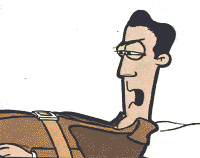


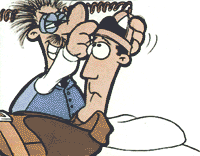
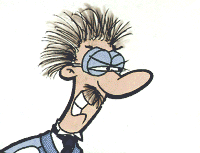


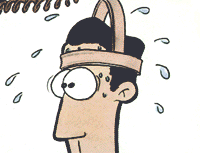
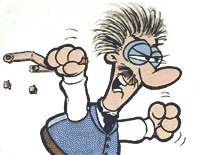
Once the storyboard is completed and approved it is then passed on to the layout artist, who takes the information given and puts the characters and background "on model," drawing them to the proper camera ready size.
In some studios, the storyboard is taken to the camera room and shot, as is, using the timing decided upon by the director. This will then give everyone an overall idea of the pacing of the film. Decisions can then be made to change some of the timing to make it flow better. This is called a leica reel.
The timing of the film will be dictated to a great extent by the dialogue and / or music being used.
Television commercials are usually half a minute long. A half hour cartoon is actually only 22 minutes long, the remaining 8 minutes allow for the opening titles, end credits and commercials. Commercials are placed between the "acts" in the show. There are always three acts within each half hour show. Each act is approximately 7 1/2 minutes long. The commercial breaks are 2 minutes long, enough for four commercials.
SHOT SELECTION
The storyboard artist is responsible for selecting the camera angles throughout the film. The proper selection of these angles can make or break the film. The shot selection controls what you the viewer are allowed to see at any point within the film. This is a responsibility not to be taken lightly. A great deal of film sense is necessary to carry out this job. Poor shot selection can make even the most exciting action very boring.
It is imperative that the storyboard artist be well versed in the language of film, as well as when to use a close-up or a long shot and why. The best way to learn this is to study films. View as many films as you can, both good and bad. Don't watch them for their entertainment value, but rather study them to see how the scenes have been put together and why. The best way to do this is to rent videos so that you can stop and rewind the film in order to view something more closely. This is a difficult thing to do because you must make a conscious effort to really study the structure of the film. Needless to say, you won't be able to do this in a group, as everyone else will probably want to kill you.
The shots that are available to you are the following:
CHARACTER SHOTS
One Shot
Two Shot
Three Shot
Group Shot
Over The Shoulder Shot
Establishing Shot
CAMERA ANGLES
Up Shot
Low Angle Shot
Down Shot
Oblique Angle
CAMERA MOVES
Trucks
Tracks
Pans
Rotations
FIELD SHOTS
Extreme Close-up
Close-up
Medium Close-up
Medium Shot
Medium Long Shot
Long Shot
Extreme Long Shot